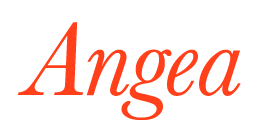At school we were never taught about our female anatomy, reproductive system or menstrual cycle. Today, I’m going to take you on a journey so you can visualise your uterus and understand its true function and anatomy.
You can find your uterus located in the female pelvis between the bladder and rectum. I like the visualisation of a sandwich – it’s just behind the bladder and in front of the rectum. The average dimensions of an adult female uterus is 8cm long, 5cm across and 4cm thick.
It is divided into three main anatomic sections from top to bottom. Firstly, we have the fundus, corpus (body) and cervix (which protrudes into the vagina). The image above shows our 3 sections!
Our uterus is not suspended in space which I believed it was for many years. In fact it’s supported and held by several ligaments. These ligaments include the utero ovarian, round, cardinal and uterosacral ligaments. Endometriosis is commonly found on the uterosacral and round ligaments.
Our uterus is also supported by the pelvic diaphragm also known as our pelvic floor (super important during labour), urogenital diaphragm know called the perineal membrane (layer of dense fascia) and perineal body.
Ladies when you have a pelvic ultrasound, the imaging will show which way your uterus is positioned. The position can be described as anteverted which is normal (tipped forward) or retroverted (tipped or titled uterus towards the back), anteflexed also normal (fundus tilts forward) or retroflexed (tilts posteriorly). For 50% women the uterus lies in anteflexed and anteverted position – which is the most common.
The Mighty Uterus is composed of three distinct tissue layers:
1. Endometrium: the lining of the uterus that modulates thickens and thins over the course of the menstrual cycle. It is known as our menstrual blood. (Soil)
2. Myometrium: is the middle layer of the uterine wall, consists of smooth muscle tissue. Its main function is to induce uterine contractions during menstruation, pregnancy and labour. Side note: Adenomyosis affects the myometrium, it is characterized by the migration of endometrial tissue into this layer. (Terrain
3. The perimetrium is the outer layer of the uterus, it is a serous membrane forming the lining of the abdominal cavity.
The uterus functions by accepting a fertilized egg which passes through the fallopian tube. The egg (zygote) then nestles into the endometrium (our first tissue layer) where it receives nourishment from blood vessels that feed the growing embryo. This is where I encourage my patients to visualise their womb as a garden! As your pregnancy grows, so to does your uterus. It expands to accommodate the pregnancy. During labour the uterus contracts as the cervix dilates!
The uterus receives blood from the uterine and ovarian arteries. This is why Chinese Medicine emphases the importance of a healthy blood flow and supply. Blood supply enters via the myometrium then enters into the endometrium via different arteries.
The nerves from our spinal cord that innervate the uterus are found at T11 and T12 (Thoracic). The parasympathetic supply (relax and rest) is from S2 to s4 (Sacrum).
The uterus will vary in shape and size depending on the life cycle you are in- for example puberty will be smaller and post menopause it will be quiet large- which mine is!! Not to mention our hormones also affect the uterus.
I hope you’ve enjoyed my mini lecture today on the anatomy of our uterus. Please feel free to ask me any questions in the comments below or share this post with a friend who may need this info.

Amanda is the founder of Angea and has over 12 years of experience working with women to support their health journey. In addition to being a registered doctor of Chinese medicine, Amanda is a yoga teacher and founder of Mindful Pregnancy Yoga Training. Amanda offers acupuncture, Chinese herbal medicine and womb healing treatments at Angea.

